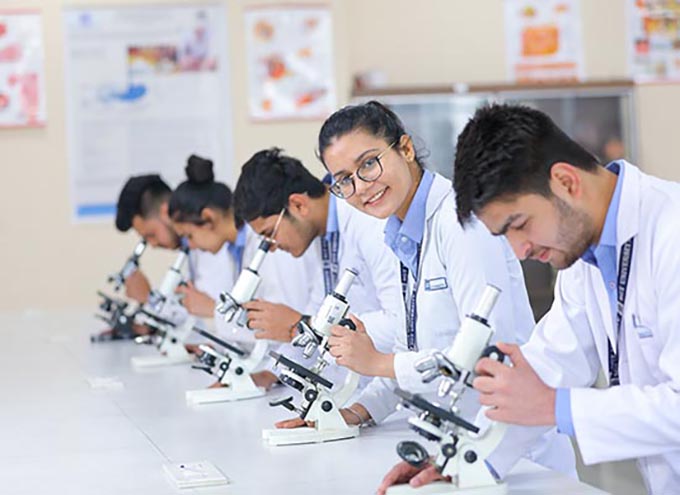The World Class University (WCU) status targeted by the government will be achieved, one of the ways is if there are more world-class researchers from Indonesia.
In fact, as of October 2023, there were only 92 Indonesian researchers included in the Top 2 Percent World Ranking Scientist list out of a total of 210 thousand top researchers, or around 0.04% .
Other data shows that not a single Indonesian researcher is included in the 7000 highly cited researchers in 2023. Indonesia is also only ranked 55th in the world based on the number of reputable international scientific publications , losing to Singapore, Vietnam, Thailand, and Malaysia.
This indicates that even though Indonesia has the fourth largest population in the world , we are still a “newcomer” in the international research arena. Having become a newcomer, our research and academic world is also continuously rocked by various scandals .
The phenomenon of the difficulty in producing world-class researchers from Indonesia is caused by many things, including minimal financial support, facilities, and complicated bureaucracy.
1. Financial constraints
UNESCO stated that the average research budget of upper-middle-income countries is 1-2% of Gross Domestic Product (GDP). Meanwhile, in Indonesia, only 0.02% of GDP is allocated for research.
Although there has been an increase in the research budget in the last 1-2 years , this amount still needs to be continuously increased to improve the quality of research and equalize research output.
2. Minimal facilities
Our equipment and laboratory facilities are still limited and make it difficult for researchers to conduct quality research. My colleagues at UGM and ITB, for example, said that they were forced to conduct analysis of Emerging Pollutants (EPs) and Contaminants of Emerging Concern (CECs) as chemical and pharmaceutical parameters, abroad, due to the lack of labs in Indonesia that can analyze them.
Moreover, researchers are not allowed to buy laboratory equipment (non-consumable) if they receive RIIM research grant funds from the National Research and Innovation Agency (BRIN). This makes it difficult for researchers on campus to have quality laboratory equipment. Meanwhile, funds from the campus are limited and ‘waiting their turn’, such as for building construction or adding classrooms first.
In addition, based on my experience on campus, the process of purchasing expensive and quality laboratory equipment is usually quite complicated and time-consuming, because it must go through registered partners, a consultation process, or an auction to avoid misuse of the budget.
3. Bureaucratic entanglement
Other obstacles are related to the complicated research bureaucracy process and the length of time for disbursing research funds. Based on the author’s experience, research funds from the center are often delayed and only come down around July-August. Meanwhile, publication of research results must be completed or submitted to journals in November or before the end of the budget year.
In fact, according to the author’s experience, research on health, for example, requires a minimum of six months of data collection. This does not include the time for data analysis and journal writing, to obtain satisfactory results and worthy of publication in top international journals.
Long term investment as a solution
The above situation requires various solutions.
First , the government needs to encourage Indonesian researchers to work in top universities abroad. If we look at the list of professors in the world’s top universities, we will see that many Chinese and Indians are there . In fact, China and India dominate foreign researchers in the United States (US) , while researchers from Indonesia are not in the top 25.
Going abroad will result in stronger collaboration between top universities and home country institutions. China is implementing this “strategy” and indirectly improving the quality of their research.
Second , the need for multi-year research funding . Currently, almost all research funding from the government only runs for one year. Researchers need to apply for new research grants the following year. This makes researchers unable to conduct in-depth and continuous research, because of the high uncertainty of obtaining funds in the following year.
Third , universities should provide more post-doc opportunities for lecturers. Currently, campus responsibilities make it difficult for lecturers to leave their jobs for long periods of time.
For example, it is difficult for a campus to release its lecturers to do post-docs because of the shortage of lecturers for teaching activities on campus. In fact, post-doc opportunities at overseas campuses will open up new collaboration networks and improve the lecturers’ own abilities.
Fourth , improving the quality of researchers requires strong collaboration between the industrial world or the private sector with universities. One of the challenges of the Indonesian research world is the lack of dissemination and application of research conducted on campus to the community. In fact, the industrial world can be the party that applies the results of the research in society.
Industry can also be a source of funding for research so that universities do not only rely on research funding from the government. The Matching Fund- Kedaireka program , which was created in 2021, has accommodated this idea. However, improvements must still be made to strengthen collaboration between the industrial world and universities.
Author Bio: Daniel is a Lecturer in Public Health at Gadjah Mada University

